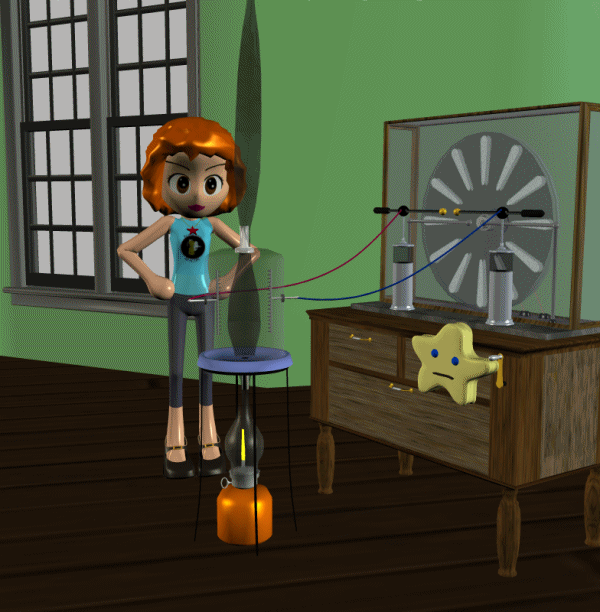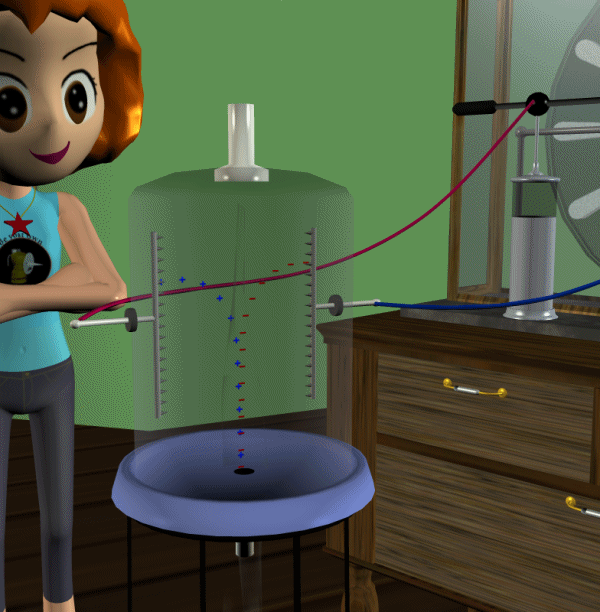Friday, October 23, 2020
Lodge meets Lodge
This item is really an extension of the Lodge precipitator. I'll repeat part of the earlier item and tack on the new.
= = = = = START PARTIAL REPRINT:
Electrostatic precipitators were under active development in 1886. Lodge and his associates built a practical precipitator, and tried it in a lead smelter. The precipitator reduced the dust and fumes "remarkably".
Lead is one of the few REAL pollutants. The EPA acted first to halt lead pollution, which is the ONLY good thing they did.
I've seen the effects of lead pollution. Several of my engineer uncles worked for American Metals, which had a smelter in Blackwell. We visited them occasionally, and the results of REAL pollution were dramatically obvious. The part of town downwind from the smelter was BARREN AND GRAY. Plants refused to grow there. Most adults had serious lung problems and died young. After EPA forced the plant to shut down, Blackwell was green again.
Big point: Pollution control for lead was AVAILABLE in 1886, and was developed and perfected over the years. Effective precipitators on smelters were common in 1920. American Metals didn't bother. Pinching pennies was more important than live workers. American Metals deserved to be shut down.
After 1975, EPA's real mission was finished, and EPA should have been shut down instead of switching to the "carbon" genocide. Unfortunately there's no meta-agency to shut down agencies that create problems instead of solving problems. Calling Trinity House, the permanent enemy of Parkinson!
= = = = =
Lodge and associates built several versions of the precipitator. The small version was meant mainly for demonstrations. Before turning on the charge, smoke from an oil lamp flowed freely through the chamber.
 = = = = =
With charge applied from a static machine or induction coil, the smoke was ionized and precipitated.
= = = = =
With charge applied from a static machine or induction coil, the smoke was ionized and precipitated.
 Positive ions deposited on the negatively charged comb, and negative ions deposited on the positive comb.
Positive ions deposited on the negatively charged comb, and negative ions deposited on the positive comb.
 = = = = = END PARTIAL REPRINT.
= = = = = Extension:
Lodge's sons, who ran the Lodge Fume Deposit Company profitably for many years, also tried to control weather with static charge. This miniature experiment was successful, but they quickly gave up attempts to apply the same technique to parts of a city. One 'active lightning rod' on a building managed to clear out a few cubic feet around it. There was no way to multiply the effect enough to clear a house, let alone a neighborhood.
This bell jar was similar to the one above, except that the positive charge is a single point in the middle and negative charge is on the metal base. The bell jar contained water vapor similar to a London fog.
= = = = = END PARTIAL REPRINT.
= = = = = Extension:
Lodge's sons, who ran the Lodge Fume Deposit Company profitably for many years, also tried to control weather with static charge. This miniature experiment was successful, but they quickly gave up attempts to apply the same technique to parts of a city. One 'active lightning rod' on a building managed to clear out a few cubic feet around it. There was no way to multiply the effect enough to clear a house, let alone a neighborhood.
This bell jar was similar to the one above, except that the positive charge is a single point in the middle and negative charge is on the metal base. The bell jar contained water vapor similar to a London fog.
 When charge was applied, the water vapor COHERED in radial patterns, following the electrostatic lines of force.
When charge was applied, the water vapor COHERED in radial patterns, following the electrostatic lines of force.
 The real thing:
The real thing:
 This coherer-like behavior was the interesting part. Coherers are a basic and general type of device, with a range of uses that have only been partly explored.
Effective weather control tends to work by reactance, not resistance or blunt counterforce. Trees break wind into vortices. Hail cannons shoot vortices into the cloud mass to induce larger vortices that suck in the energy. If a coherer-like effect could create charged 'nuclei' for pollution, it could possibly agglomerate and precipitate large masses of smoke and smog.
This coherer-like behavior was the interesting part. Coherers are a basic and general type of device, with a range of uses that have only been partly explored.
Effective weather control tends to work by reactance, not resistance or blunt counterforce. Trees break wind into vortices. Hail cannons shoot vortices into the cloud mass to induce larger vortices that suck in the energy. If a coherer-like effect could create charged 'nuclei' for pollution, it could possibly agglomerate and precipitate large masses of smoke and smog.
 = = = = =
With charge applied from a static machine or induction coil, the smoke was ionized and precipitated.
= = = = =
With charge applied from a static machine or induction coil, the smoke was ionized and precipitated.
 Positive ions deposited on the negatively charged comb, and negative ions deposited on the positive comb.
Positive ions deposited on the negatively charged comb, and negative ions deposited on the positive comb.
 = = = = = END PARTIAL REPRINT.
= = = = = Extension:
Lodge's sons, who ran the Lodge Fume Deposit Company profitably for many years, also tried to control weather with static charge. This miniature experiment was successful, but they quickly gave up attempts to apply the same technique to parts of a city. One 'active lightning rod' on a building managed to clear out a few cubic feet around it. There was no way to multiply the effect enough to clear a house, let alone a neighborhood.
This bell jar was similar to the one above, except that the positive charge is a single point in the middle and negative charge is on the metal base. The bell jar contained water vapor similar to a London fog.
= = = = = END PARTIAL REPRINT.
= = = = = Extension:
Lodge's sons, who ran the Lodge Fume Deposit Company profitably for many years, also tried to control weather with static charge. This miniature experiment was successful, but they quickly gave up attempts to apply the same technique to parts of a city. One 'active lightning rod' on a building managed to clear out a few cubic feet around it. There was no way to multiply the effect enough to clear a house, let alone a neighborhood.
This bell jar was similar to the one above, except that the positive charge is a single point in the middle and negative charge is on the metal base. The bell jar contained water vapor similar to a London fog.
 When charge was applied, the water vapor COHERED in radial patterns, following the electrostatic lines of force.
When charge was applied, the water vapor COHERED in radial patterns, following the electrostatic lines of force.
 The real thing:
The real thing:
 This coherer-like behavior was the interesting part. Coherers are a basic and general type of device, with a range of uses that have only been partly explored.
Effective weather control tends to work by reactance, not resistance or blunt counterforce. Trees break wind into vortices. Hail cannons shoot vortices into the cloud mass to induce larger vortices that suck in the energy. If a coherer-like effect could create charged 'nuclei' for pollution, it could possibly agglomerate and precipitate large masses of smoke and smog.
This coherer-like behavior was the interesting part. Coherers are a basic and general type of device, with a range of uses that have only been partly explored.
Effective weather control tends to work by reactance, not resistance or blunt counterforce. Trees break wind into vortices. Hail cannons shoot vortices into the cloud mass to induce larger vortices that suck in the energy. If a coherer-like effect could create charged 'nuclei' for pollution, it could possibly agglomerate and precipitate large masses of smoke and smog.Labels: Carbon Cult, Lodge, Parkinson, Trinity House
